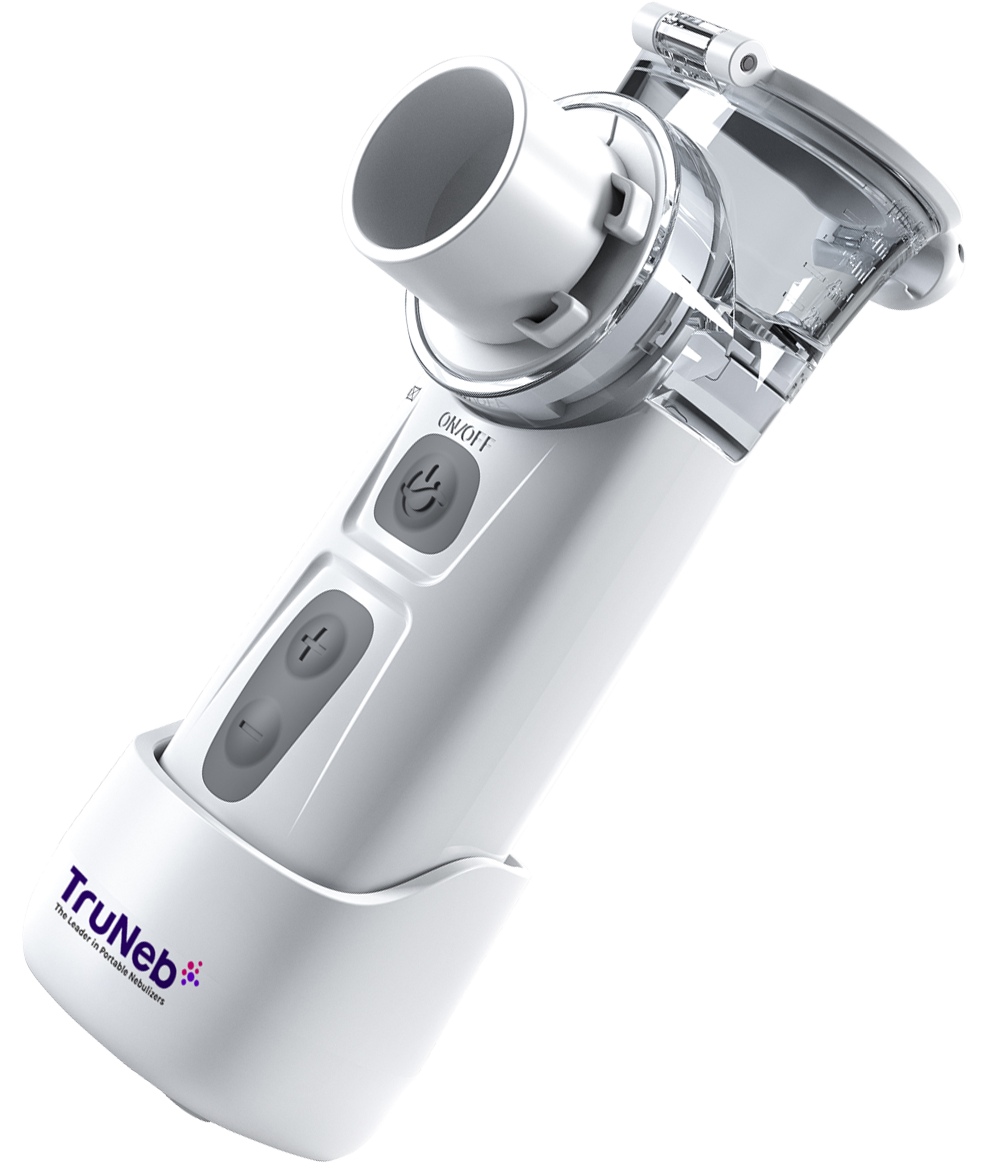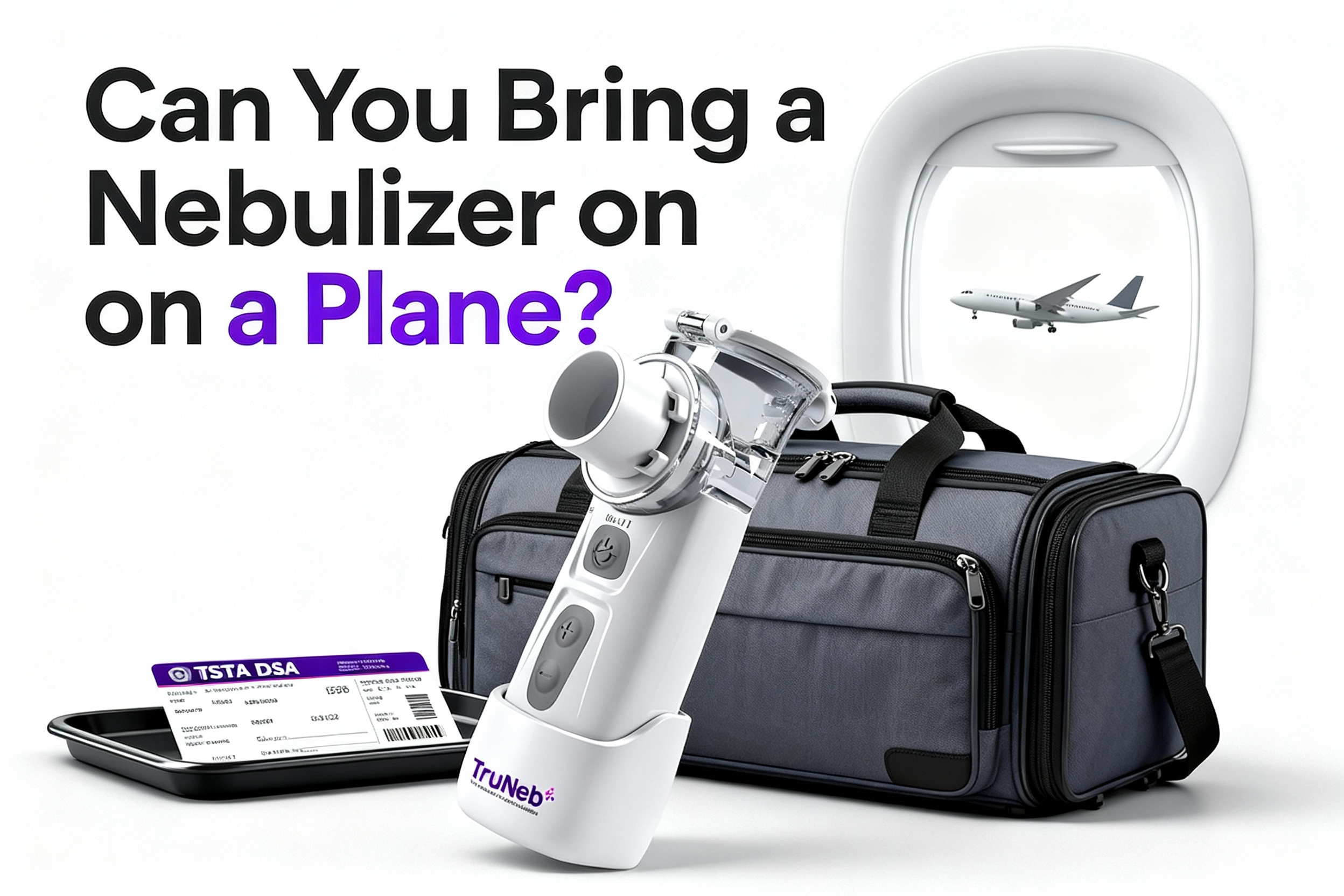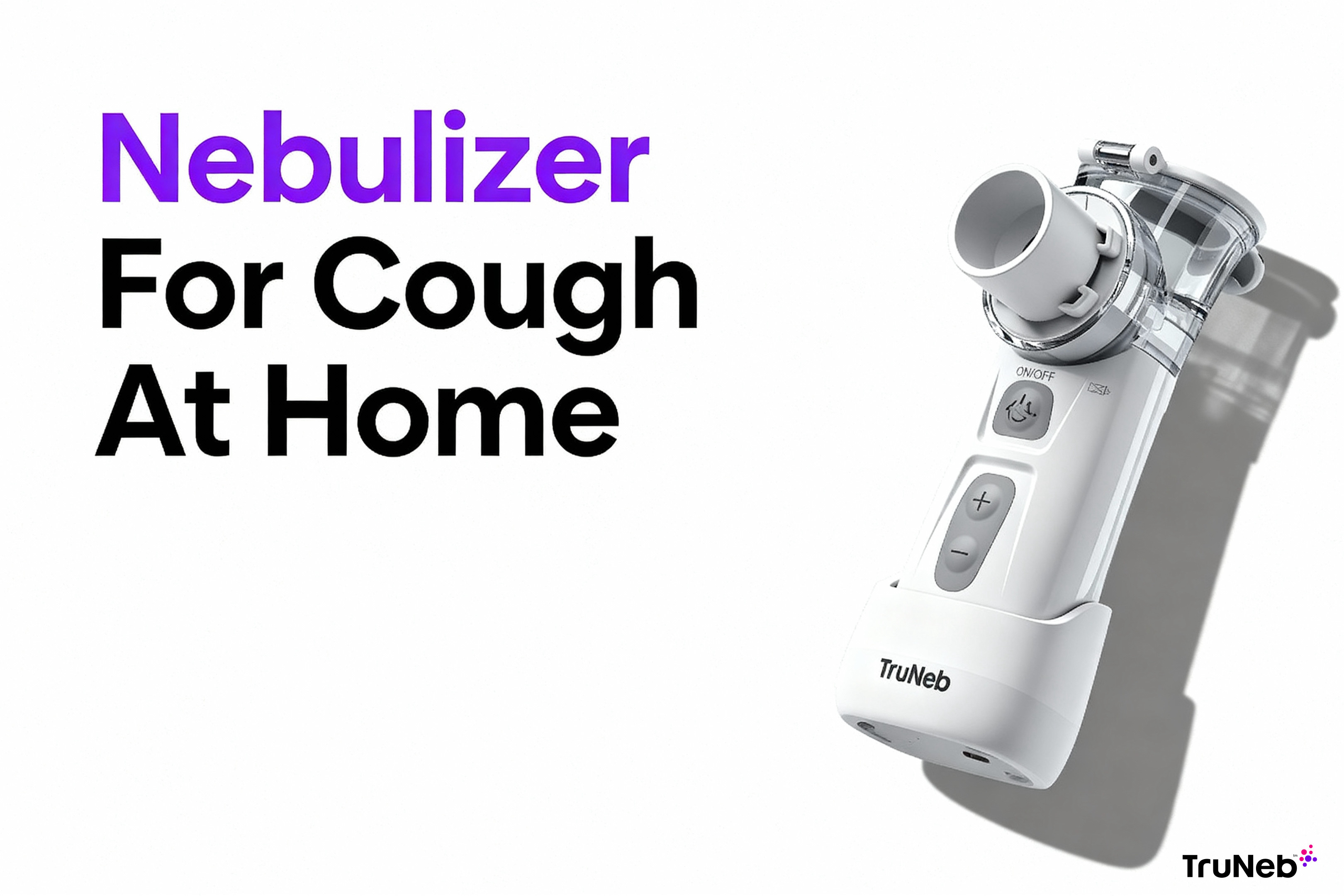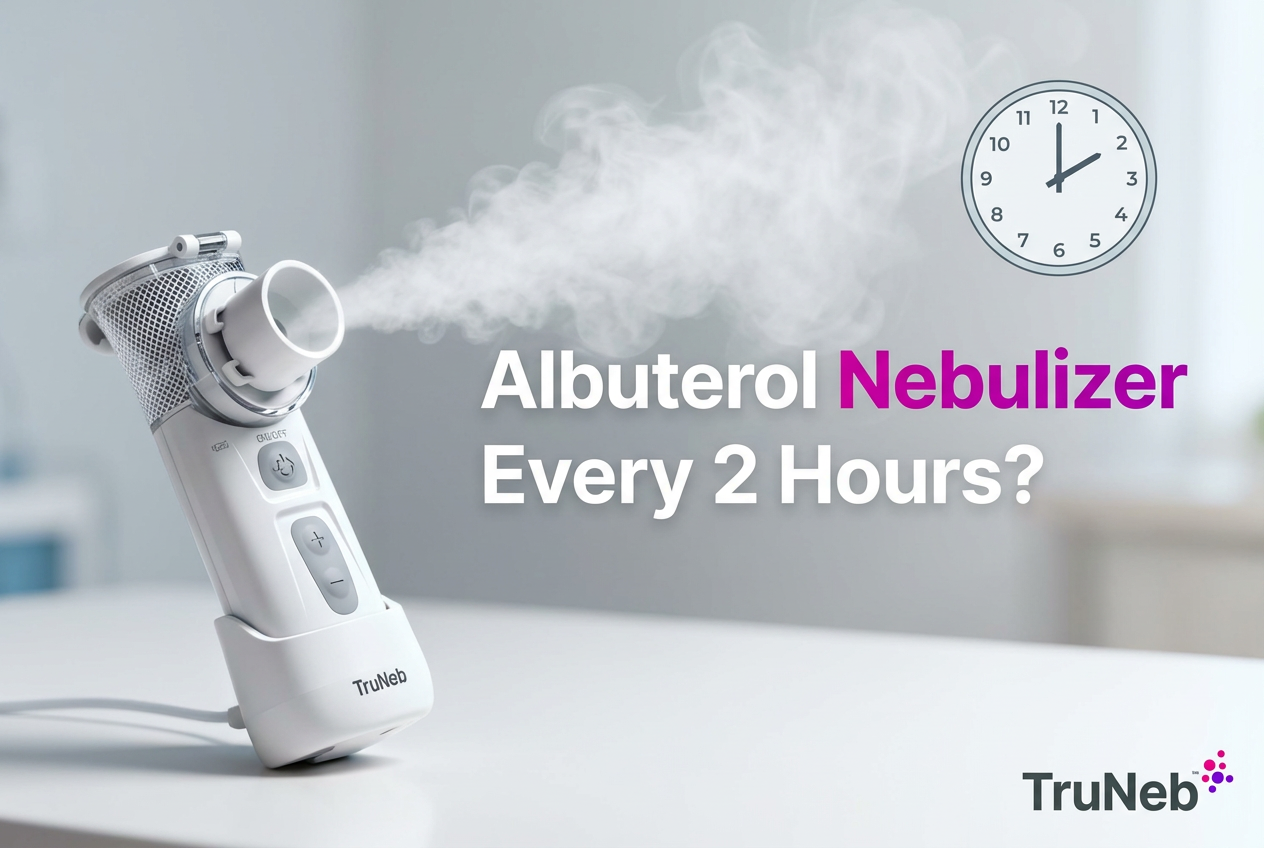On this page

How Long Does a Nebulizer Typically Last? (Average Lifespan)
Most home nebulizer machines last about 3 to 5 years with regular use and good care. So, how many years does a nebulizer last? About 3 to 5 years with regular use and good care. They don’t "expire" on a set date like medicine, but performance can fade over time.
- A Compressor (jet) nebulizer typically lasts around 5 years.
- A mesh handheld nebulizer typically lasts 2–3 years because its tiny vibrating mesh can wear or clog.
Quick rule of thumb: plan for around 5 years for the machine, and replace small parts on a schedule so each treatment stays effective.
Compressor (jet) units often last about 5 years with routine care. Mesh handheld units typically last 2–3 years because the vibrating mesh can clog or wear. Nebulizers do not have a fixed expiration date; replace when performance declines.
Why Nebulizer Lifespan Varies – Key Factors and Differences
Nebulizer Type: Compressor vs Mesh (and Ultrasonic)
- Compressor (jet) units use a motor to push air through the medicine. They’re sturdy and typically last near 5 years with proper care.
- Mesh nebulizers are small and quiet. A thin vibrating mesh creates the mist, but it can clog or degrade, so lifespan is typically 2–3 years.
- Ultrasonic models use sound waves. They can be durable but are less common for home use and have specific cleaning needs—check your manual.
How Often You Use It
- More daily treatments mean more wear. Think of total hours run, like miles on a car. People with asthma or COPD who use a nebulizer daily put on more "hours" and will typically see faster wear.
Cleaning and Maintenance
- Regular cleaning helps prevent clogs and strain on the device. Clean parts after each use and disinfect on a routine. A clean device usually lasts longer.
Quality of Device and Parts
- Well-built machines and genuine replacement parts can last longer. The warranty length can hint at expected durability.
Storage and Handling
- Keep equipment dry, clean, and protected from dust. Avoid drops and extreme heat or cold. Gentle handling can add months or years.
Compressor units tend to last around 5 years, mesh handhelds around 2–3 years, and usage and cleaning habits make the biggest difference.

Signs Your Nebulizer May Need Replacement (When to Replace)
- Treatments take longer than before. If 3 mL that used to finish in about 10–15 minutes now takes much longer, output can be low.
- Weak or uneven mist. Little visible mist or frequent sputtering can mean the device is struggling.
- New loud noises or vibration. Rattling or whining can point to motor or fan issues.
- Overheating or sudden shut-offs. Thermal protection kicking in is a warning sign.
- Cracks, loose ports, or frayed cords. Physical damage is a safety risk.
- Past its prime. If it’s around 5 years old (or out of warranty) and showing any of the above, plan a replacement.
If you’re wondering whether nebulizer machines "go bad," watch for slower treatments, weaker mist, overheating, or new noises—those are common failure signs.
If you’re unsure, a respiratory therapist or your equipment provider can check output. You can also ask your doctor about next steps.
If you have severe trouble breathing, chest pain, bluish lips/face, or confusion, call emergency services right away.
Replace your nebulizer if treatments take longer, the mist weakens, it overheats or shuts off, or the device is visibly damaged.
Nebulizer Parts Replacement Guide (Cups, Filters, Tubing & More)
Staying on schedule with cups, tubing, masks, and filters keeps your treatments effective and safer.
| Part | Replace when | Why it matters |
|---|---|---|
| Nebulizer cup/chamber (reusable) | Every 6–12 months† | Wear and clouding can reduce mist; clean after each use. |
| Nebulizer cup (disposable) | ~10–15 uses or ~2 weeks† ‡ | Short-term, single-patient use; switch to reusable for long-term home therapy. |
| Mask or mouthpiece | Every 6–12 months† | Hygiene and fit decline over time; replace sooner if sticky or discolored. |
| Tubing (compressor models) | About every 6 months† | Can harden or trap moisture; don’t wash inside tubing—replace if stiff or discolored. |
| Air filter (compressor) | Check monthly; replace every 3–6 months or when discolored | Maintains airflow and protects the motor; never run without a filter. |
| Machine (compressor or mesh) | Plan around 3–5 years or per warranty | Replace if treatments get slow, mist weakens, it overheats, or parts are damaged. |
† Ranges vary by how often you use and clean your device; always follow your manual. ‡ Disposable cups are short‑term, single‑patient items.
How to Extend the Life of Your Nebulizer (Maintenance Tips)
- Clean after each use. Wash the cup and mask/mouthpiece in warm soapy water, rinse well, and air-dry completely.
- Disinfect regularly. Follow your manual’s method (disinfecting solution, boiling if allowed, or vinegar mix). This helps reduce bacteria and buildup.
- Keep parts dry. Store only when fully dry to prevent mold and residue.
- Check the filter monthly. Replace it if it looks dirty or discolored (compressor models).
- Use the right steps. Don’t boil or dishwash parts unless the manual says it’s safe. Avoid running the machine without airflow or without a filter.
- Protect from dust and drops. Store in a clean, dry place and handle gently.
- Know what’s not a nebulizer. You might see boxes labeled "steam inhaler"—these aren’t for breathing medications.
Cleaning and drying parts after each use, plus routine disinfecting and filter checks, helps your nebulizer last longer.
Nebulizer Warranties, Insurance, and Replacement Planning
- Many home compressors include a 3–5 year warranty. That window often reflects expected useful life.
- Medicare treats nebulizers as Durable Medical Equipment (DME) with a "reasonable useful lifetime" of about 5 years. Check your plan. After that, a new device is typically covered if medically needed.
- Keep your prescription current. You’ll need it for insurance to replace a device or parts.
- If portability matters, a compact portable mesh nebulizer like TruNeb™ can help you take treatments on the go. Choose what fits your routine and your doctor’s guidance.
Medicare and many plans treat 5 years as a nebulizer’s useful lifetime, which often aligns with real-world replacement timing.
Conclusion & Key Takeaways
Most nebulizers last about 3 to 5 years, but care makes a big difference. Clean after each use, replace parts on schedule, and watch for slow treatments or weak mist. If your machine is aging or showing issues, plan ahead so you never miss a treatment when you need it.
Disclaimer: This article is for informational purposes and is not a substitute for professional medical advice. Always talk to your doctor about your symptoms, devices, and treatments.
Frequently Asked Questions
Tap or click a question below to see the answer:
Most home nebulizer machines last about 3–5 years with regular use and good care. Compressor (jet) units often reach ~5 years; mesh handhelds average 2–3 years. Replace sooner if performance drops.
Plan on replacing the machine around the 5-year mark or sooner if you notice longer treatment times (>15 minutes for ~3 mL), weak or uneven mist, overheating/shutoffs, new noises, or visible damage. Follow your device’s warranty and your provider’s guidance.
Common signs include slower treatments, weaker or sputtering mist, unusual noise or vibration, overheating or sudden shut-offs, and cracked or loose parts. If these occur, troubleshoot parts and cleaning; if issues persist, replace the machine.
No. They don’t have a fixed expiration date like medications. They wear out over years—replace parts on schedule and the device when output declines.
Yes. Cleaning and drying parts after each use, routine disinfection, and timely filter changes help prevent residue and clogs that strain motors or mesh—keeping the device working better for longer.
Reusable cup: 6–12 months; disposable cup: ~10–15 uses (~2 weeks); tubing: ~6 months; compressor filter: check monthly and replace every 3–6 months or when discolored. Always follow your device manual.







